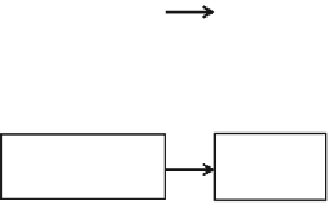Graphics Reference
In-Depth Information
a
S'
1
S
1
Compute Intermediate
Filter Sum
Round to
input bit-depth
+
S
Round to
input bit-depth
S'
2
S
2
Compute Intermediate
Filter Sum
Round to
input bit-depth
b
S'
1
Compute Intermediate
Filter Sum
+
S
Round to
input bit-depth
S'
2
Compute Intermediate
Filter Sum
Fig. 5.10
Bi-prediction process in (
a
) H.264/AVC and in (
b
) HEVC. Reproduced with permission
from [
17
], © 2013 IEEE
order in which horizontal filtering and vertical filtering is done needs to be specified
(horizontal first in HEVC). This specific order was selected mainly to simplify
implementation on specific architectures.
It should also be noted that in HEVC the only clipping operation is at the
very end of the motion compensation process, with no clipping in intermediate
stages. As there is also no rounding in intermediate stages, HEVC interpolation
filter allows certain implementation optimizations. Consider the case where bi-
prediction is used and motion vectors of each prediction direction points to the same
fractional position. In these cases, final prediction could be obtained by first adding
two reference signals and performing interpolation and rounding once, instead of
interpolating each reference block, thus saving one interpolation process.
5.3.2
Complexity and Coding Efficiency Characteristics
In this section, the complexity of the interpolation filter design in HEVC is
analyzed and compared with that of H.264/AVC. In addition, the coding efficiency
improvements brought with the improved design are also presented.








